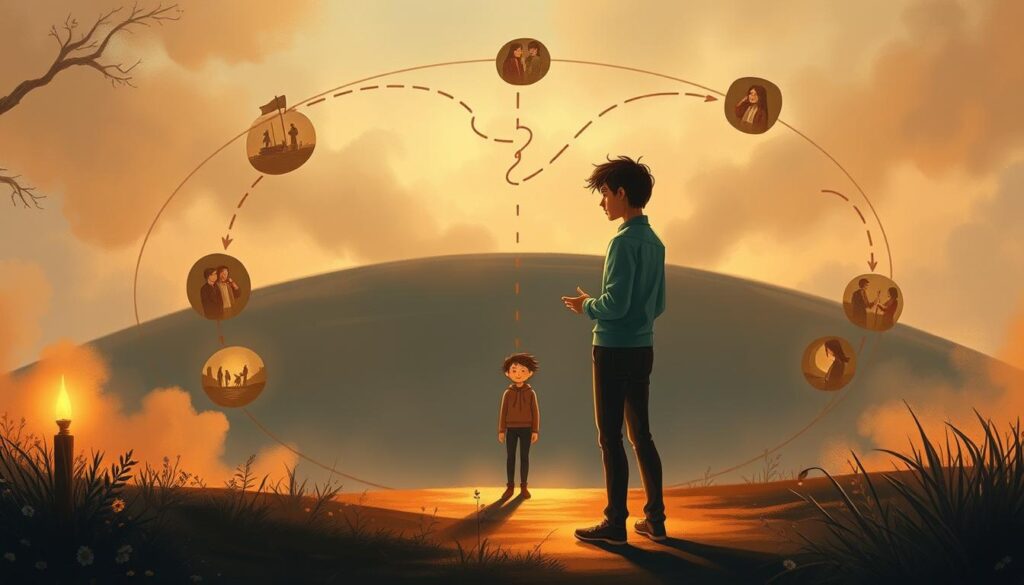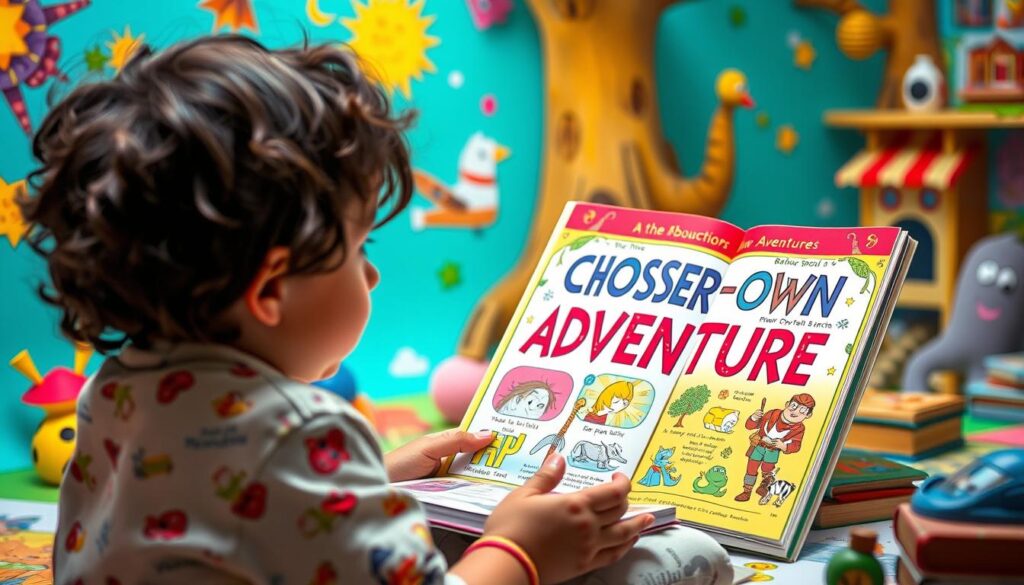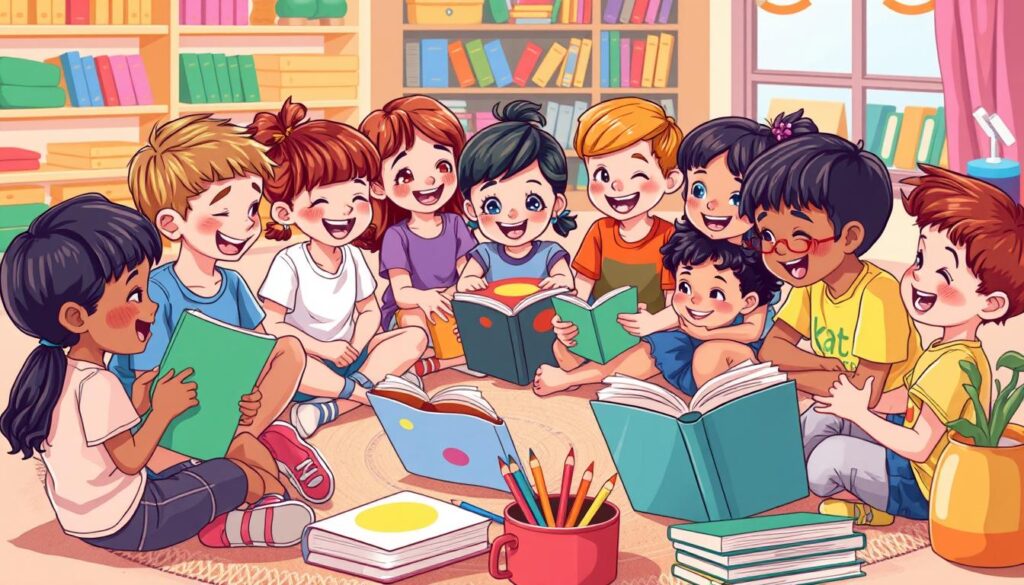Have you ever wondered how the stories we tell our children can shape their ability to make decisions in real life?
Stories are more than just entertainment; they’re a powerful tool that can influence how children develop decision-making skills. Every character in a story faces a situation where they must make a decision, and the consequences of that decision drive the story forward.
This process mirrors the same mental processes we use when facing choices in our own life. By engaging with the idea of different choices and their outcomes, children can learn valuable lessons without facing the real-world consequences.
In this article, we’ll explore how the choices presented in stories can help develop critical thinking and decision-making skills in children, making them more confident and thoughtful decision-makers.
The Power of Choices in Stories Decision-Making
Making choices is an inevitable part of life, and stories offer a unique platform for children to practice decision-making. As a parent, you want your child to develop the skills necessary to navigate life’s challenges confidently. One of the most effective ways to do this is through the stories they read and listen to.
Why Decision-Making Skills Matter for Children
Decision-making is a fundamental life skill that impacts everything from academic success to social relationships and emotional well-being. Children who struggle with decision-making often face anxiety, indecision, and difficulty taking initiative as they grow older. By developing decision-making skills early, children can build confidence in their ability to make informed choices that shape their life.
As children engage with stories, they encounter characters who face decisions and navigate the consequences of their choices. This exposure helps children build neural pathways that will aid them in making their own decisions later in life.
How Stories Provide Safe Practice Grounds
Stories create consequence-free zones where children can mentally rehearse decision-making processes without real-world risks. When children engage with character decisions in a book, they’re able to see the full arc of a decision—from the moment of choice through the consequences and resolution. This process helps them understand the impact of their decisions on their life and the lives of others.
For instance, you can explore bedtime stories for kids that feature characters making significant decisions, and discuss these choices with your child to reinforce their understanding of decision-making.
Understanding the Decision Circle in Storytelling
Storytelling often involves characters making decisions that alter their path, and understanding this process can be achieved by examining the decision circle. The decision circle is a framework that outlines the stages a character goes through when faced with a significant choice.

The Six Stages of Decision-Making in Stories
The decision circle comprises six stages that characters navigate when making choices. These stages are crucial for effective decision-making.
Notice: Recognizing the Need for a Decision
The first stage, “Notice,” involves the character becoming aware of the need to make a decision. This awareness is the initial step in the decision-making process.
Reflect: Considering Options and Consequences
During “Reflect,” the character considers their options and the potential consequences of their choices, demonstrating the importance of pausing before taking action.
Discuss: Seeking Input from Others
The “Discuss” stage shows the value of seeking input from others rather than making all decisions in isolation. This stage highlights the importance of collaboration and seeking advice.
Plan: Formulating a Course of Action
In “Plan,” the character organizes their thoughts and maps out a course of action before proceeding, illustrating the need for a clear plan.
Gather: Enlisting Help When Needed
The “Gather” stage demonstrates that sometimes, characters need help from others to implement their decisions effectively.
Act: Taking the Decisive Step
Finally, “Act” shows the character taking the decisive step, demonstrating courage and commitment to their chosen path.
How Characters Navigate These Stages
Characters typically have strengths in either the thinking stages (Notice, Reflect) or the action stages (Plan, Gather, Act) of the decision circle. By analyzing how different characters move through these stages, readers can identify their own decision-making strengths and weaknesses. Writers can use this to craft compelling stories that illustrate the importance of thorough decision-making.
Character Types and Their Decision-Making Styles
Story characters display a range of decision-making approaches, from swift action to careful deliberation. This diversity in decision-making styles not only makes stories more engaging but also provides valuable lessons for readers, especially children.
Characters in stories can be broadly categorized based on their decision-making styles. Understanding these categories can help readers identify their own tendencies and learn from the characters’ experiences.
Quick Decision-Makers
Some characters, like Piper from The Lost Girl of Astor Street, are quick decision-makers. They act swiftly and decisively, often skipping reflection or discussion. This approach demonstrates courage and initiative but can also lead to consequences if not thought through completely.
Thoughtful Deliberators
On the other hand, characters like Taichi from Within These Lines prefer to take their time, weighing options and considering consequences before acting. This thoughtful approach models careful consideration and patience but can sometimes result in missed opportunities due to indecision.
Reluctant Choosers
Then there are characters who avoid making decisions altogether, hoping that problems will resolve themselves or someone else will decide. This reluctance illustrates how indecision itself is a choice with its own set of consequences.
By examining these different decision-making styles through characters in stories, children can gain a deeper understanding of their own tendencies and learn when each approach might be appropriate.
| Character Type | Decision-Making Style | Potential Outcomes |
|---|---|---|
| Quick Decision-Makers | Act swiftly, often without thorough reflection | Courage, initiative, potential for mistakes |
| Thoughtful Deliberators | Take time to weigh options and consider consequences | Careful consideration, patience, potential for missed opportunities |
| Reluctant Choosers | Avoid making decisions, hoping for external resolution | Indecision as a choice, potential for negative consequences |
Using Stories to Teach Critical Thinking
Stories have the power to teach critical thinking by allowing children to analyze character choices and their consequences. When we read a story together, we’re not just enjoying a fiction tale; we’re also given a unique opportunity to explore the decision-making process in a safe and engaging way.
Discussing Character Choices with Your Child
One of the most effective ways to teach critical thinking is by discussing the choices characters make in a book. Ask your child open-ended questions like “Why do you think they made that choice?” or “What might have happened if they chose differently?” This encourages them to think deeply about the decision-making process and understand the consequences of different actions. For more ideas on teaching values through stories, you can visit this resource.
Exploring Alternative Outcomes Together
Exploring alternative outcomes is a powerful exercise that builds flexible thinking in children. Ask your child to imagine different choices a character could have made and how the story might have changed. This “what if” thinking helps children understand that most situations offer multiple possible solutions. It’s a fun way to engage with the story and develop critical thinking skills.
Connecting Story Decisions to Real Life
Making explicit connections between story decisions and real life helps children transfer these skills to their own experiences. When your child faces a decision similar to one you’ve read about together, point it out: “Remember when Charlotte had to decide whether to tell the truth? You’re in a similar situation now.” This helps bridge the gap between the world of the story and the real world, making the lessons more relatable and applicable.
| Activity | Description | Benefit |
|---|---|---|
| Discussing Character Choices | Ask open-ended questions about character decisions | Develops critical thinking and analysis skills |
| Exploring Alternative Outcomes | Imagine different choices and their consequences | Builds flexible thinking and problem-solving skills |
| Connecting to Real Life | Link story decisions to real-life situations | Enhances applicability of lessons learned |

Practical Activities to Strengthen Decision-Making Skills
Now that we’ve discussed the importance of decision-making in stories, let’s dive into some practical activities to strengthen these skills. These hands-on experiences will help children actively practice decision-making through story-based exercises.
Choose-Your-Own-Adventure Reading Sessions
Engage your child in Choose-Your-Own-Adventure reading sessions, where they make decisions and experience consequences in a structured narrative. These interactive children’s books with choices make the connection between choices and outcomes explicit and immediate.

Role-Playing Story Scenarios
Use role-playing to allow children to embody characters and work through decisions from different perspectives. Ask questions like “What would Harry Potter do in this situation?” to help them consider various approaches to a problem.
Creating Decision Trees for Favorite Characters
Create a visual decision tree for favorite characters, mapping out possible choices and their consequences. This activity helps children see how one decision leads to others and how early choices can impact later options.
Storytelling Games That Build Decision Skills
Engage children in storytelling games that require quick decisions, building confidence in their decision-making abilities while keeping the stakes low and fun. Games like “What happens next?” where children take turns adding to a story based on character decisions, build both creativity and decision-making skills.

These activities can be adapted for different ages and abilities, making them versatile tools for parents and educators. By incorporating these exercises into daily routines, children can develop their decision-making skills in a fun and engaging way.
Conclusion: From Story Choices to Life Skills
By engaging with characters’ decisions in stories, children develop crucial decision-making skills that serve them well beyond childhood. The decision-making skills children develop through engaging with stories transfer directly to real-world situations they’ll face throughout life. When children analyze character choices, they’re building a mental library of decision-making strategies they can draw upon when facing their own choices.
The safe practice ground of stories allows children to experience the consequences of decisions without real-world risks. This prepares them for times when the stakes are higher. Parents who consistently engage children in discussions about story choices are equipping them with critical thinking skills that extend far beyond literary analysis. Decision-making is not just about making the “right” choice—it’s about developing a thoughtful process for approaching problems and weighing options.
The time invested in exploring story choices with your child pays dividends throughout their development, influencing everything from academic choices to social relationships. By bridging the gap between fictional choices and real-life decisions, we help children see themselves as capable decision-makers with agency in their own stories. As a result, children become more confident, independent, and resilient, ready to face the complexities of the world around them.
FAQ
How can I help my child develop decision-making skills through storytelling?
You can help your child develop decision-making skills by engaging them in stories that present characters with tough choices. Discuss the characters’ decisions and explore alternative outcomes together, making connections to real-life situations.
What are some effective ways to discuss character choices with my child?
To discuss character choices, ask open-ended questions about the story, such as “What would you do if you were the character?” or “Why do you think the character made that decision?” This encourages critical thinking and helps your child develop their own decision-making skills.
Can you recommend some activities to strengthen decision-making skills in children?
Yes, activities like Choose-Your-Own-Adventure reading sessions, role-playing story scenarios, and creating decision trees for favorite characters can be very effective. These activities allow children to practice making decisions in a fun and interactive way.
How can I connect story decisions to real-life situations?
To connect story decisions to real life, ask your child to think about how the characters’ choices might relate to their own experiences. For example, you might ask, “Have you ever faced a similar situation? How did you handle it?” This helps your child see the value of decision-making skills in their everyday life.
Are there different character types that can help teach decision-making skills?
Yes, different character types, such as the Quick Decision-Makers, Thoughtful Deliberators, and Reluctant Choosers, can provide valuable lessons. By exploring how these characters navigate decision-making, your child can learn about different approaches to making choices.




